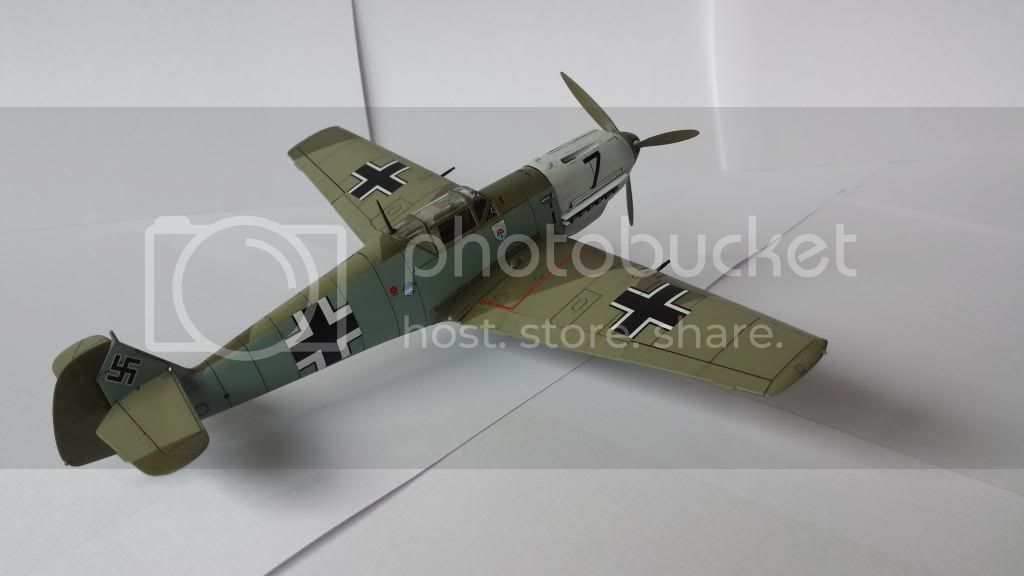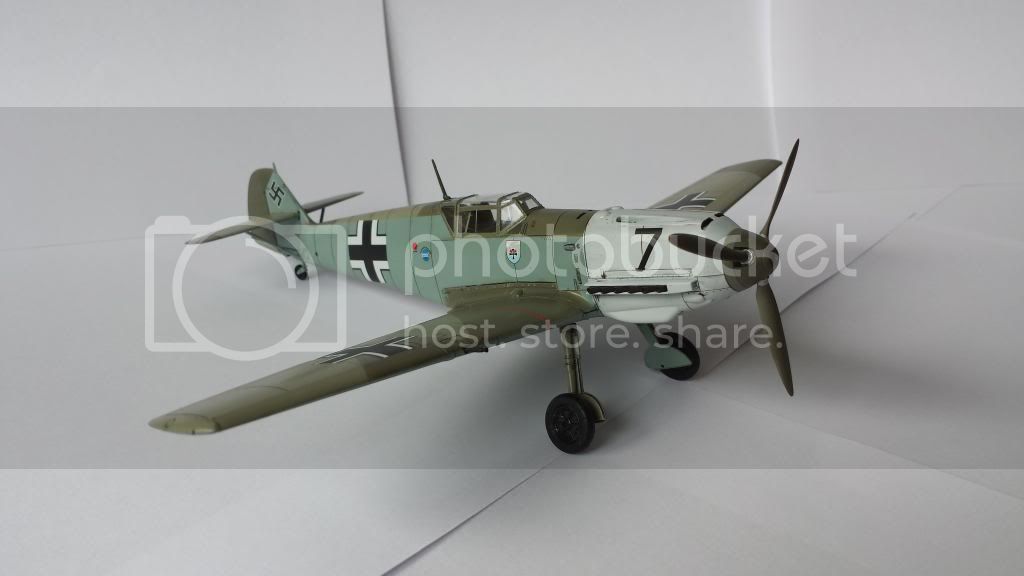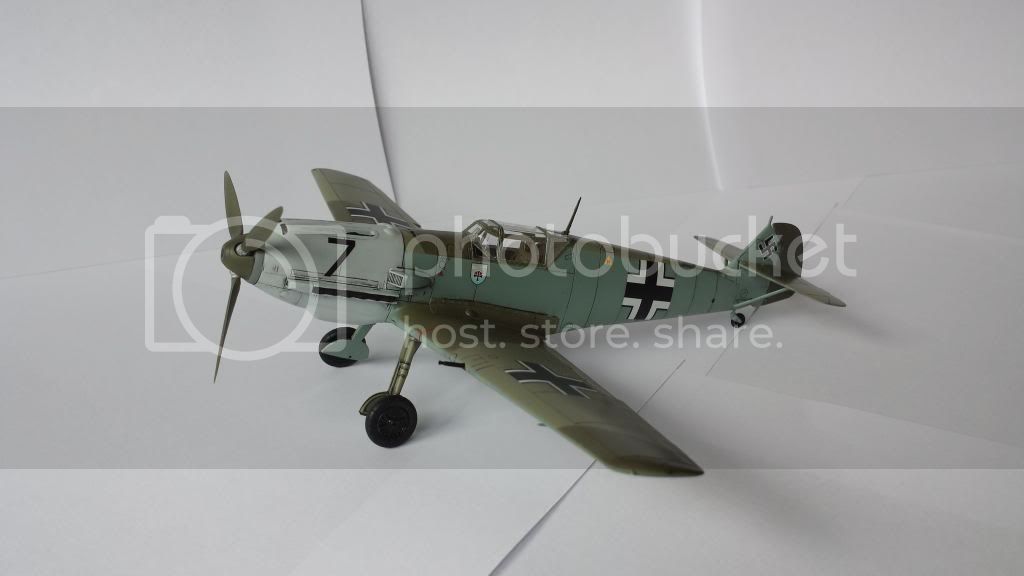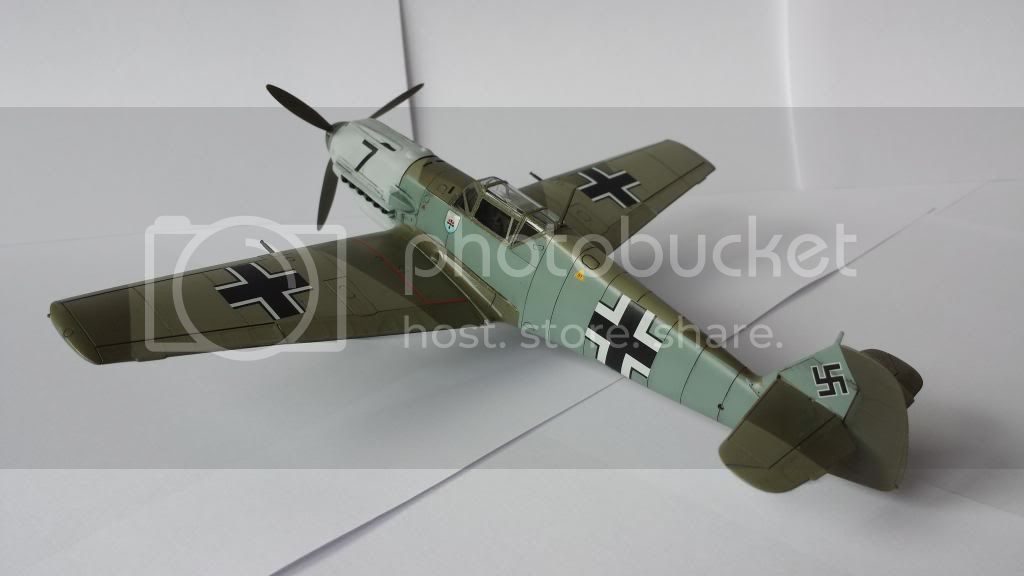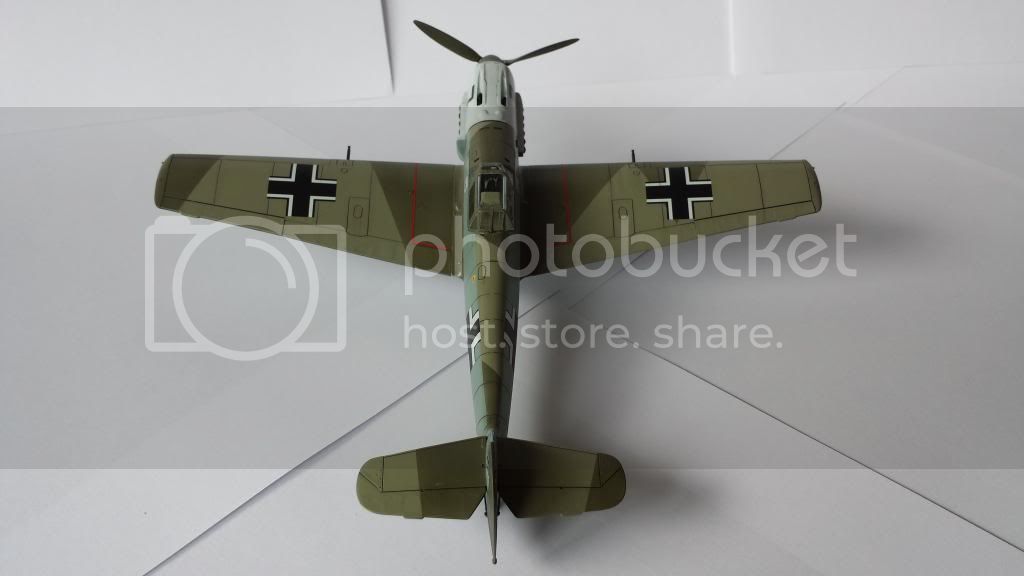You can use invisible mending thread or stretched sprue. I like the invisible thread to do my antennas but I've used sprue as well. When I did my
JAL DC-7 I used sprue. I drilled the leading edge of the tail and superglued in the antenna line after the model was painted.

Once I was certain that the glue was solidly set, I used a pair of hemostats as a weight, clipped them to the antenna line and hung the model nose down. I applied a drop of superglue to the antenna mast on top of the nose, let the weight of the hemostat draw the sprue tight and held the model so the antenna line contacted the drop of glue on the antenna mast. Then I let the glue dry (with a little help from some accelerator) and clipped the excess off.

The Bf 109 has a little mast on the tip of the vertical stabiliser. You can file a tiny notch in the tip of it for the sprue to sit, or you can replace it with a section of microtube. If you use the microtube, you need to cut off the mast and drill a hole for the tube to seat into. Then feed the antenna line into it and glue it securely. Attach the antenna to the mast behind the cockpit using the same dangling method I described above. There's a lead-in antenna which goes from the side of the fuselage as shown in
this drawing. To fit it, drill a tiny hole in the fuselage, securely glue in your antenna line, hold the model upside down and let the hemostats pull it tightly against the longer antenna. Glue it with a drop of superglue and trim the excess when it's dry. Antenna lines are pretty much the last thing you do with the build. The whole process takes longer to explain than to do


